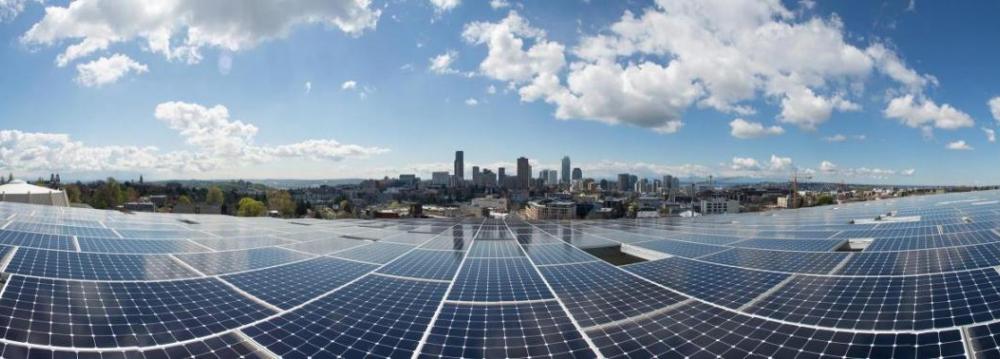One year after the outset of a government initiative to promote solar panels among household consumers, reports suggest that panels provided by authorities have already lost their efficiency.
The purchase and installation of solar panels to generate renewable energy is relatively costly. Therefore, households have been called upon by the energy ministry to install solar energy systems in exchange for 50 percent of the installation cost as ex gratia loans.
A one kilowatt cap has been set on household solar panels. The cap, however, is exclusive of communal areas where consumers are allowed to use solar power plants the capacity of which might exceed one kilowatt.
The government provides one kilowatt solar panels at a price of 90-95 million rials ($2,700-$2,950).
"Considering the price, it is par for the course that the panels are of low quality," Raheleh Ghezel, head of the Iran Electrical Industry Syndicate (IEIS)'s renewable energy committee told the Persian daily, Forsat-e-Emruz.
It has been reported that productivity of solar panels has diminished to the extent that they are no more capable of turning a single light on, Ghezel said, adding that such problems wouldn't arise if households were permitted to opt for companies providing the panels, or solar power companies were required by law to satisfy customers' expectation.
Domestic companies complain that Iranian customs authorize import of almost all solar panels, at a low price and of poor quality, without adequate inspections.
Lack of Standards
The defined standards of solar panels and cells are low, Ghezel noted. The IEIS has called for private sector involvement in the Iran Renewable Energy Organization (SUNA)'s standard committee. "SUNA, however, has not responded to the IEIS request yet," she added.
Several projects were carried out with Sharif University of Technology to set out the standards for solar panels and cells, Kurosh Showri, head of the Solar Energy Society told Forsat-e-Emruz.
"Lack of oversight" is the main reason why poor quality panels are imported, Showri noted. SUNA is the only authority at the helm of solar energy in Iran, yet the energy ministry decides either to close it, or merge it with other organizations. Such measures have ultimately deprived the country of a supervisory authority with respect to solar energy, he added.
Given the lack of laboratories to assess solar panels' quality, substandard panels are imported, "spurring mistrust among the populace on the whole subject of solar energy," Showri noted, expressing concern over potential reluctance of people to draw on solar energy.
"Unfortunately most people lack knowledge about solar energy, relying merely on appearance and the information printed on labels."
Currently, there are only three domestic manufacturers of solar panels, which will not be able to compete with low-priced imported panels should they manufacture high quality panels at greater cost.
High Quality Panels
Some solar energy specialists, however, reject allegations of substandard and malfunctioning solar panels, asserting that all companies active in solar energy are monitored by the energy ministry.
All companies have obtained approval from the energy ministry prior to operation, Fatemeh-Sadat Tabatabaei, managing director of the Green Energy Development Company, said.
"All panels installed by authorities on rooftops are of high quality," she said, adding that domestic manufacturers have imported their cells from a US-based company, GE Cellular.
Tabataei denied reports on malfunctioning panels, noting that only "a few solar panels belonging to the municipality have stopped working as the batteries' life had come to an end."
Iran enjoys about 280-300 clear sunny days a year and with an average of 2,200 kilowatt-hours of solar radiation per square meter, it has a great potential to tap solar energy as a highly reliable source of power generation.
Nevertheless, the deployment of solar energy is less than 0.1 percent despite the potential.
Iran needs to generate 5,000 megawatts of renewable energy through 2015 as stipulated in the Fifth Five-Year Economic Development Plan (2011-16).
While the share of renewable resources in the total energy production stands at almost 0.5%, the number is to reach 5 percent in four years.


